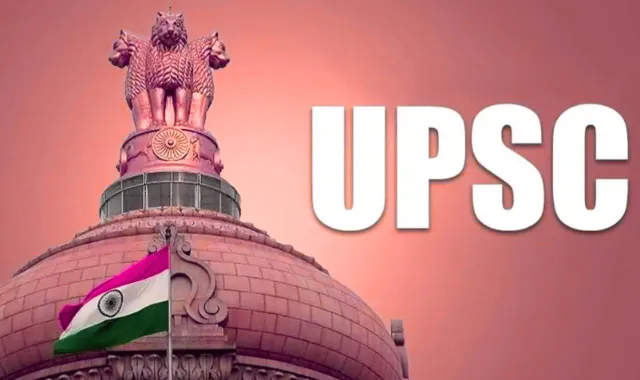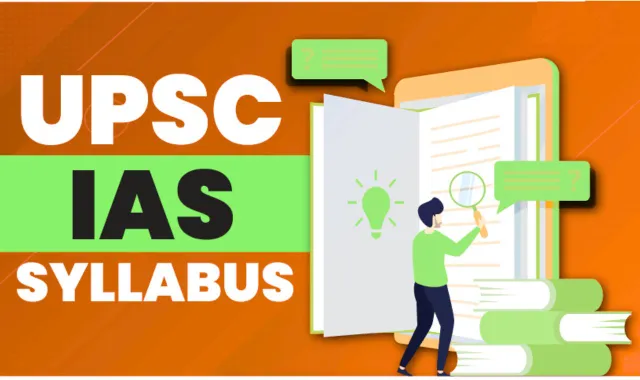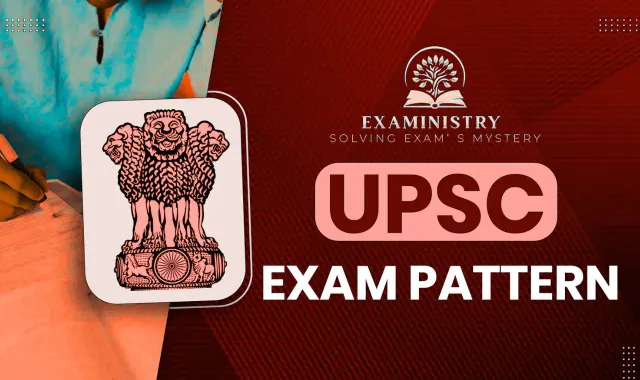The upsc exam pattern Civil Services Examination is considered India’s most prestigious and competitive exam, conducted by the Union Public Service Commission (UPSC) every year. It opens the gateway to elite administrative positions like IAS (Indian Administrative Service), IPS (Indian Police Service), IFS (Indian Foreign Service).
Lakhs of aspirants appear annually, but only a few hundred make it through, proving that it’s not just a test of knowledge but of patience, character, and strategy. To crack this exam, the first and most crucial step is to understand the UPSC Exam Pattern thoroughly. It helps aspirants design a smart preparation plan and approach each stage with clarity.
The exam is structured in three key stages — Preliminary, Mains, and Personality Test (Interview). Each stage serves a distinct purpose and tests different skill sets. Let’s dive into the complete structure of the UPSC exam pattern and understand how you can navigate each phase effectively.
What is the UPSC Exam Pattern?
The UPSC Exam Pattern defines the structure, marking scheme, and stages of the Civil Services Examination (CSE). It is designed to evaluate a candidate’s academic capability, analytical reasoning, personality, and decision-making skills. The upsc exam pattern follows a multi-layered process to ensure that only the most suitable candidates qualify for administrative roles that require leadership, ethical values, and public service commitment.
The exam consists of three consecutive stages — Prelims, Mains, and Interview. Each stage acts as a filter to assess specific abilities. The Prelims tests general awareness and analytical aptitude, the Mains examines in-depth knowledge and writing ability, and the Interview assesses personality and mental composure.
UPSC Exam Pattern at a Glance
| Stage | Type | Papers | Total Marks | Nature of Exam | Purpose |
| Prelims | Objective | 2 | 400 | Qualifying | Screening test for Mains |
| Mains | Descriptive | 9 | 1750 | Merit-based | Tests depth, analysis, and ethics |
| Interview | Oral Test | 1 | 275 | Final | Evaluates personality and suitability |
This three-tier examination ensures that aspirants are tested holistically — from factual understanding to ethical reasoning. Each level requires a tailored approach and consistent practice. Let’s now break down each stage in detail.
UPSC Preliminary Examination

The Prelims is the first stage of the upsc exam pattern and acts as a screening test to shortlist candidates for the Mains. It consists of two objective-type papers — General Studies Paper I and CSAT (Civil Services Aptitude Test) Paper II. Both papers carry 200 marks each and are conducted on the same day.
Paper Structure:
- Paper I: General Studies – 200 Marks
- Paper II (CSAT): Aptitude – 200 Marks (Qualifying with 33%)
- Duration: 2 hours per paper
- Negative Marking: ⅓ mark deduction for each wrong answer
While Paper I determines whether a candidate qualifies for Mains, Paper II must be passed with at least 33% marks. Questions in Paper I cover subjects like history, geography, economy, polity, environment, and current affairs. Paper II tests logical reasoning, comprehension, and decision-making abilities.
UPSC Mains Examination
The Mains stage is the heart of the upsc exam pattern. It is descriptive in nature and tests a candidate’s intellectual depth, writing skills, and analytical capabilities. The Mains consist of nine papers, of which two are qualifying and seven contribute to merit.
Structure of Mains Examination:
- Paper A: Indian Language – 300 Marks (Qualifying)
- Paper B: English – 300 Marks (Qualifying)
- Paper I: Essay – 250 Marks
- Paper II: General Studies I – 250 Marks
- Paper III: General Studies II – 250 Marks
- Paper IV: General Studies III – 250 Marks
- Paper V: General Studies IV – 250 Marks
- Paper VI: Optional Subject Paper I – 250 Marks
- Paper VII: Optional Subject Paper II – 250 Marks
Total Marks for Merit: 1750
Each paper runs for three hours, and candidates can choose their optional subject from a list prescribed by the UPSC, which includes disciplines like Sociology, History, Political Science, Public Administration, Anthropology, etc.
General Studies Papers (GS I–IV):
- GS Paper I: Indian Heritage, History, Geography, and Society
- GS Paper II: Polity, Governance, Constitution, and International Relations
- GS Paper III: Economy, Environment, Science & Technology, Security Issues
- GS Paper IV: Ethics, Integrity, and Aptitude
The Essay Paper tests articulation, structure, and originality of thought. Candidates must write two essays of around 1000–1200 words each on social, political, or philosophical topics.
UPSC Personality Test
The Interview, often called the Personality Test, is the final stage. Conducted at the upsc exam pattern office in New Delhi, this phase is worth 275 marks and carries immense significance.
The board consists of senior experts and members who engage candidates in a conversational assessment. The questions are designed to test clarity of thought, balance of judgment, honesty, leadership qualities, and presence of mind.
Key Areas of Evaluation:
- General awareness and current events
- Problem-solving approach
- Ethical and moral integrity
- Communication skills and body language
- Emotional intelligence and decision-making
The interview is not a test of facts; it’s a test of character. Confidence, humility, and authenticity are more important than polished answers. Candidates who remain calm and genuine leave a stronger impression than those who try to sound perfect.
Final Merit Calculation
After completing the Mains and Interview, the upsc exam pattern prepares a final merit list based on the aggregate marks:
- Mains (1750 marks) + Interview (275 marks) = 2025 marks total
The Prelims marks are not counted in the final ranking. Based on the final score, candidates are allocated services like IAS, IPS, IFS, IRS, etc. The rank determines both the service and the cadre allotment.
Duration and Timeline of the UPSC Exam Cycle
The entire upsc exam pattern examination process typically spans one year.
- Prelims: May–June
- Mains: September–October
- Interview: January–April (next year)
- Final Results: May
Aspirants usually start preparation 12–15 months in advance to align their studies with this timeline. The process requires consistency, planning, and regular evaluation through mock tests and revisions.
Important Points to Remember
- Negative Marking: Applicable in Prelims (–⅓ for each wrong answer).
- CSAT: Qualifying in nature but mandatory.
- Language Papers: Must clear to be eligible for merit papers.
- Optional Subjects: Can make or break your score — choose wisely.
- Interview Preparation: Read newspapers, government reports, and practice mock sessions.
UPSC Exam Pattern Quick Comparison
| Feature | Prelims | Mains | Interview |
| Type | Objective | Descriptive | Oral |
| Total Marks | 400 | 1750 | 275 |
| Duration | 2 hours/paper | 3 hours/paper | 30–45 mins |
| Evaluation | Screening | Merit | Personality |
| Nature | Qualifying | Core | Final |
Tips to Prepare According to the UPSC Exam Pattern

- Start Early: Give at least a year for preparation.
- Understand the Syllabus: It’s your ultimate guidebook.
- Make Notes: Keep them crisp and revision-friendly.
- Daily Current Affairs: Read The Hindu, Indian Express, or PIB.
- Mock Tests: Practice Prelims and Mains tests regularly.
- Answer Writing Practice: Improves speed and structure.
- Stay Consistent:upsc exam pattern is a marathon, not a sprint.
- Mindset Matters: Balance confidence with humility.
Don’t compare your journey with others. The exam rewards persistence more than perfection.
Common Mistakes Aspirants Make
- Ignoring CSAT or Language Papers assuming they’re easy.
- Overemphasizing current affairs but neglecting static subjects.
- Lack of time management during the Mains exam.
- Ignoring revision cycles and test analysis.
- Depending too much on coaching instead of self-study.
How Understanding the UPSC Exam Pattern Helps
Knowing the exam pattern helps aspirants:
- Plan their preparation smartly and allocate time efficiently.
- Identify weak areas early.
- Align their study plan with the marking scheme.
- Build realistic mock strategies.
- Avoid unnecessary stress and confusion.
Understanding the structure is not just about reading rules — it’s about mentally preparing for what lies ahead.
FAQs
Q1. How many stages are there in the UPSC exam?
Ans: There are three stages — Prelims, Mains, and Interview. Each stage must be cleared to qualify for the next. The process ensures a step-by-step evaluation of knowledge, writing ability, and personality before the final selection.
Q2. What is the total mark in the UPSC exam?
Ans: The UPSC Civil Services Examination carries a total of 2025 marks, out of which 1750 marks are from the Mains written papers and 275 marks from the Personality Test (Interview). The Prelims marks are not included in this total.
Q3. Is CSAT qualifying or counted for merit?
Ans: The CSAT (Civil Services Aptitude Test) is a qualifying paper in the UPSC Prelims. Candidates need to secure a minimum of 33% marks to pass it, but its marks are not counted for merit or ranking.
Q4. What type of questions are asked in UPSC Prelims?
Ans: The Prelims consist of objective-type multiple-choice questions. These cover topics like current affairs, Indian polity, economy, history, geography, general science, and environmental issues — all aimed at testing awareness and accuracy.
Q5. How is the final UPSC rank decided?
Ans: The final rank is determined based on combined marks from the Mains (1750) and Interview (275). The Prelims is only a qualifying stage and doesn’t contribute to the final merit list or rank determination.
Q6. How many attempts are allowed for UPSC?
Ans: The number of attempts depends on category: General – 6 attempts, OBC – 9 attempts, and SC/ST – unlimited attempts until the age limit is reached. Every attempt counts once you appear for the Prelims.
Q7. What is the duration of the UPSC exam process?
Ans: The entire UPSC process takes about one year to complete — from the Prelims in May–June to the final results in the following May. It’s a long journey requiring continuous preparation and patience.
Final Thoughts

The UPSC Exam Pattern is more than a schedule — it’s a roadmap to one of the most rewarding careers in India. Understanding its structure helps aspirants visualize the entire journey from Prelims to the final Interview. While the competition is fierce, the process itself is transformative. It builds discipline, awareness, and resilience — qualities that define a true civil servant.
Every topper once stood where a beginner stands today — uncertain but hopeful. The difference was perseverance, not privilege. The UPSC doesn’t just test what you know; it measures your commitment to serve the nation.
If you understand the pattern well, align your strategy accordingly, and stay consistent, your dream of becoming an IAS, IPS, or IFS officer is within reach. The key lies in preparation with purpose, patience, and passion. Success in UPSC is not luck — it’s the reward of structured effort and unwavering determination.








